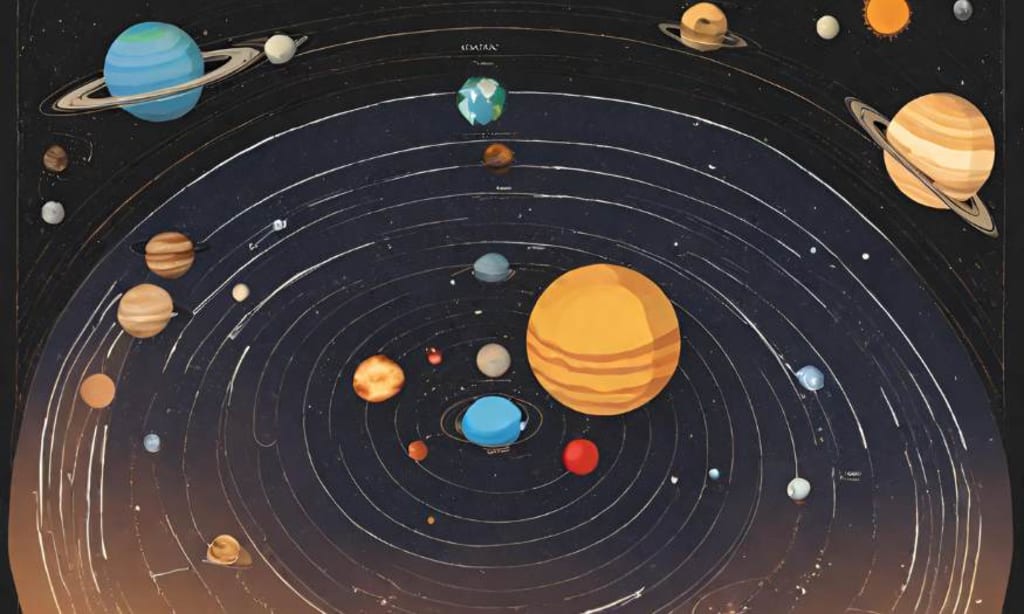
Solar system study is important because our daily problems encompass events occurring on Earth. However, when we gaze upward, we encounter an entire system designed for us. Though insignificant on the grand scale of the universe, this system holds immense importance for us.
Moreover, it’s the world system that we must understand, for while it may be inconsequential to the cosmos, to us, it is everything.
What is the solar system?
The solar system refers to the collection of celestial bodies, including the Sun, planets, moons, asteroids, comets, and other objects, that are gravitationally bound to the Sun. “solar” is derived from “Sol,” the Latin word for the Sun. The solar system is dynamic, with the Sun at its center, around which various objects orbit.
The Sun: At the heart of the solar system lies the Sun, a massive, luminous sphere composed mainly of hydrogen and helium. It’s the entire system’s primary light, heat, and energy source. The Sun’s immense gravitational pull holds the solar system together, and its energy powers the processes that govern the planets and other celestial bodies.
Planets: There are eight recognized planets in the solar system, divided into two main categories:
Terrestrial Planets are the inner planets closer to the Sun and are characterized by their rocky compositions. They include Mercury, Venus, Earth, and Mars. These planets have solid surfaces, relatively thin atmospheres, and smaller sizes than the outer planets.
Gas Giants: The outer planets, also known as gas giants, are Jupiter, Saturn, Uranus, and Neptune. These planets predominantly comprise hydrogen and helium, with thick atmospheres and no solid surfaces. They are much larger and more massive than the terrestrial planets.
Moons: Many planets, including Earth, have natural satellites, or moons, orbiting around them. These moons come in various sizes and compositions and play essential roles in the dynamics of their parent planets. For instance, Earth’s Moon affects ocean tides, while Jupiter’s moon, Io, experiences intense volcanic activity due to tidal forces.
Some other bodies in the Solar System
Dwarf Planets: Dwarf planets are celestial bodies that orbit the Sun and are spherical in shape but have not cleared their orbital neighbourhood of other debris. Pluto, once considered the ninth planet, was reclassified as a dwarf planet in 2006. Other dwarf planets include Eris, Haumea, Makemake, and Ceres, the largest object in the asteroid belt.
Asteroids are rocky bodies that orbit the Sun. They are primarily located between Mars’s and Jupiter’s orbits in the asteroid belt. Asteroids vary in size, shape, and composition, ranging from small rocky fragments to larger bodies several hundred kilometres across.
Comets: Comets are icy bodies that orbit the Sun in highly elliptical paths, originating from the solar system’s outer regions. When a comet approaches the Sun, heat causes its icy surface to sublimate, releasing gas and dust, forming a glowing coma and often a distinctive tail.
Kuiper Belt and Oort Cloud: Beyond Neptune’s orbit lies the Kuiper Belt, a region populated by icy bodies and dwarf planets such as Pluto and Eris. Farther out is the hypothetical Oort Cloud, a vast sphere of icy bodies surrounding the solar system believed to be the source of long-period comets.
How many planets in the Solar System
The solar system consists of eight recognized planets, each with its own distinct characteristics and orbiting the Sun. Starting from the closest to the Sun, the inner planets, known as the terrestrial planets, include Mercury, Venus, Earth, and Mars.
These planets are relatively small and composed primarily of rock and metal. Moving outward, the outer planets, also known as gas giants, are Jupiter, Saturn, Uranus, and Neptune.
These planets are significantly larger and predominantly composed of hydrogen and helium, with thick atmospheres and no solid surfaces. Additionally, the solar system contains numerous moons, asteroids, comets, and dwarf planets. Earth, uniquely situated in the habitable zone, supports diverse life.
For Further reading, you can read on: MUNDUS 2035
Also Read:
About the Creator
Enjoyed the story? Support the Creator.
Subscribe for free to receive all their stories in your feed. You could also pledge your support or give them a one-off tip, letting them know you appreciate their work.





Comments (1)
Good to know!